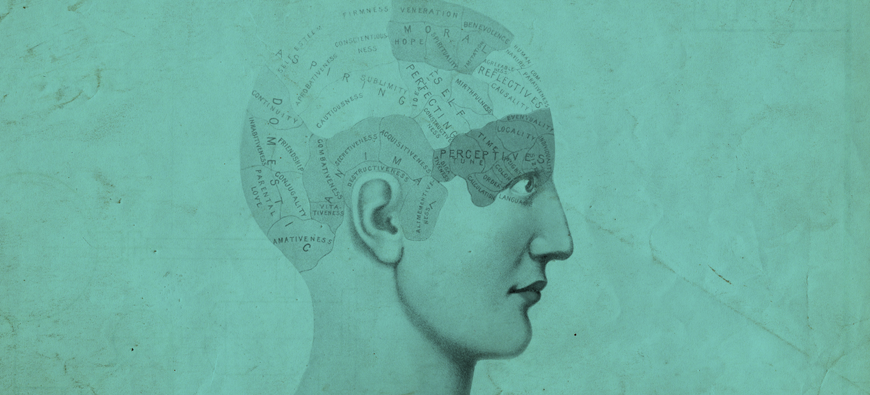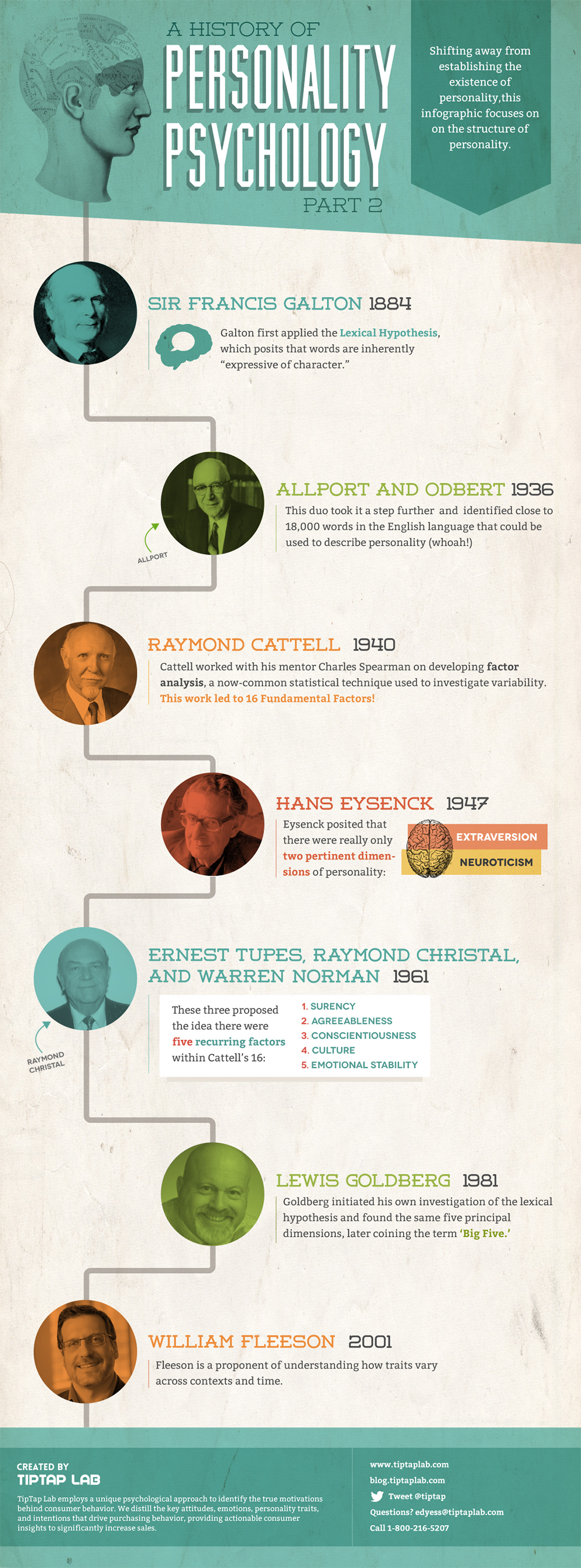A History of Personality Psychology: Part 2

A History of Personality Psychology: Part 2
In Part 1 of A History of Personality Psychology, we chronicled the development of the biological and theoretical basis for the existence of human personality. From the musings of Hippocrates and Plato to the tragic yet enlightening tamping rod accident suffered by Phineas Gage, psychology has come a long way in establishing the validity of personality. Shifting away from establishing the existence of personality, Part 2 of the history of personality psychology will be focused on the structure of personality.
We left off our story in the 1950’s -- discussing Carl Rogers and his theories regarding personality and motivation. In order to rejoin this timeline, we must first travel back to visit the origins of personality structure. The study of personality structure arguably got its start in 1884 when Sir Francis Galton first applied the Lexical Hypothesis. This approach, which posits that words are inherently “expressive of character,” was furthered in 1936 in the seminal work of Allport and Odbert. Using Webster’s Dictionary, this duo identified close to 18,000 words in the English language that could be used to describe personality. They divided this list into four categories and eventually came up with 4,000 trait related words, a figure that accentuates just how nuanced our daily interactions are!

In the 1940’s, psychologist Raymond Cattell worked with his mentor Charles Spearman on developing factor analysis, a now-common statistical technique used to investigate variability within a sample in the hopes of uncovering a core set of factors driving said variability. Cattell believed the method could be applied to the study of personality to uncover the factors that lead to observed individual differences. His work led to a set of 16 fundamental factors.
A few years later, in 1947, Hans Eysenck posited there were really only two pertinent dimensions of personality -- extraversion and neuroticism -- and that these could be combined to describe four key personality types (High E/Low N, High E/High N, Low E/High N, Low E/Low N). Another key part of Eysenck’s model was his explanation of the potential causation of these high and low tendencies. He posited that differences in limbic system arousal led to differences in neuroticism and he believed low cortical arousal led to extraversion while high cortical arousal led to introversion. This might seem counterintuitive but the reasoning has to do with individuals with high arousal wanting to lower their arousal levels (hence introversion) and vice versa.
The 1960’s saw a return to and a refinement of Cattell’s 16 factor model as Ernest Tupes and Raymond Christal (1961) and Warren Norman proposed the idea that there were five recurring factors within Catell's sixteen: Surency, Agreeableness, Conscientiousness, Emotional Stability, and Culture. These five factors would eventually morph into the Big Five we know today (Extraversion, Agreeableness, Conscientiousness, Neuroticism, and Openness) as Lewis Goldberg initiated his own investigation of the lexical hypothesis (1981) and found the same five principal dimensions, later coining the term ‘Big Five.’ In the late 1980’s and early 1990’s, Paul Costa and Robert McCrae, two other giants in the field of personality research, independently verified the construct of these five factors of personality. Since the late 20th century, researchers have conducted thousands of studies confirming the structure, universality, replicability, and predictiveness of the Big Five.
The Big Five were derived primarily through an inductive, or itemetric, approach. That is, there was a “boiling down” of a large group of items that were not theoretically assumed to relate to one another. In contrast, type measures of personality (MBTI), were developed through an inductive approach. More specifically, they were developed around theories of mind (e.g., Jung, Freud). While both approaches are valid, the Big Five approach has proven itself to be more reliable and valid throughout years of research. Read here for a more detailed discussion of the efficacy of the MBTI versus the Big Five.
So, what’s the current state of this field? There has been a shift away from using traits to determine specific personality types. Rather, it is widely viewed by psychologists that traits should be measured a continuum. Beyond that debate, scientists are constantly trying to elucidate biological factors that influence personality, difference between and within groups and how personality psychology can be applied to various fields from business to education. Even more recently, there has been a move to re-conceptualize traits as motivations (Fleeson 2001). Fleeson is a proponent of understanding how traits vary across contexts and time. He argues that even though our personality may vary quite a bit within a given day or week -- that variability is consistent across time (e.g., if you are moody in one particular context this week, you will likely be moody in a similar context next week) and thus we can use personality traits as a predictive measure of behavior. It is easy to hear about an individual’s personality traits and think “Hm, yes, that does describe how they behave.” But the real power of personality traits lies within viewing them as factors that drive goal-directed behavior in everyday situations. This way of thinking can help explain why people do what they do and even predict behavioral outcomes, which has important implications in the world of marketing and business strategy.

